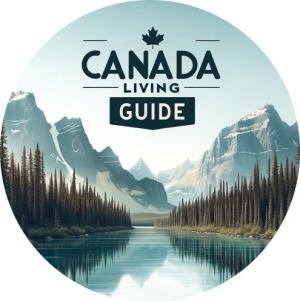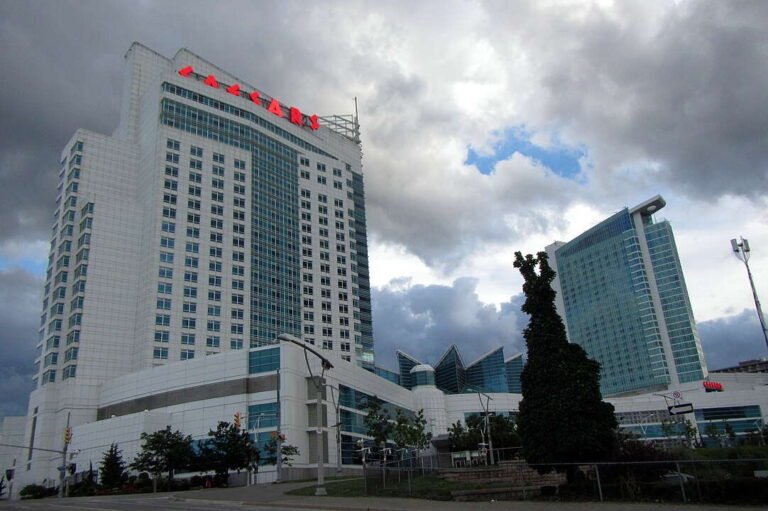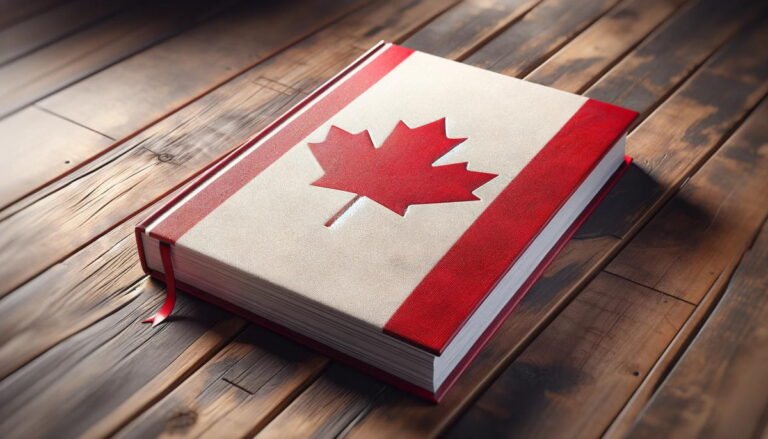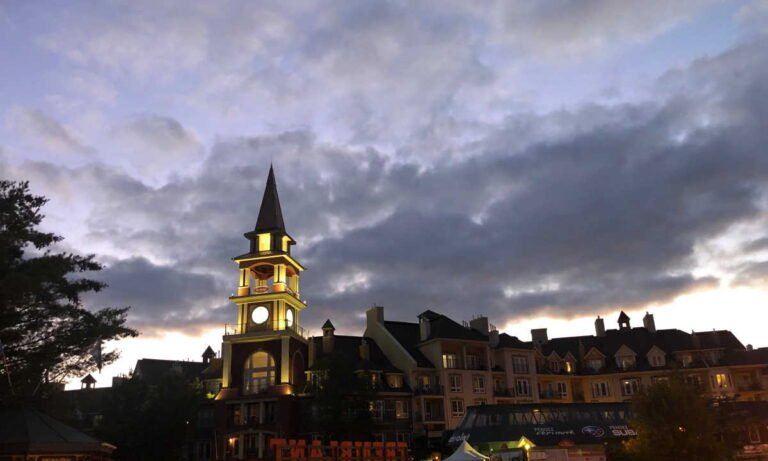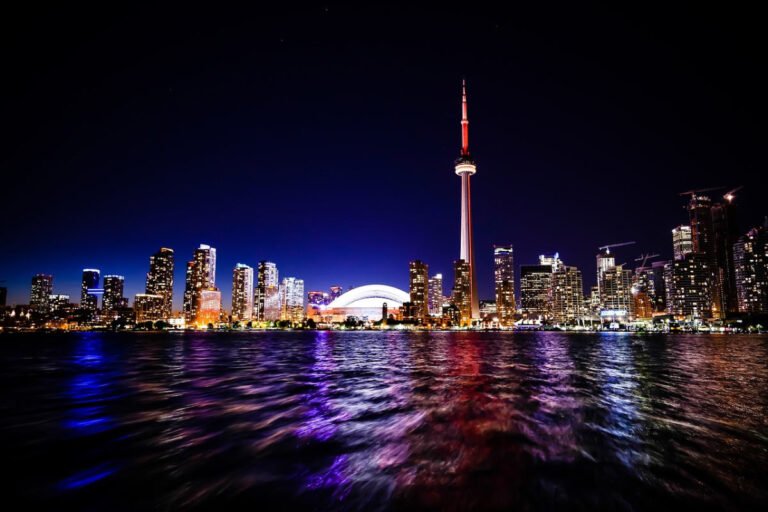Beyond the Maple Leaf: 50 Interesting Facts about Canada
In this article, we will explore a collection of 50 interesting facts about Canada, designed to offer a window into the myriad facets that define this great nation.
These facts, ranging from the peculiar and odd to the culturally significant and historically profound, weave a tapestry of information that paints a vivid picture of Canada’s character and heritage.
As someone who has experienced life in Canada firsthand, these facts hold special resonance for me. Living in Canada as an immigrant, I’ve been privileged to witness and be a part of this country’s incredible journey.

From the world’s longest coastline to the discovery of insulin, from the cultural significance of the Group of Seven to the culinary delight of poutine, each fact contributes to this amazing mosaic of Canadian identity.
This compilation serves not only as an informative journey through Canada’s many aspects but also as a celebration of the country’s contributions to the world and its evolution as a diverse and inclusive society.
Whether you’re a curious explorer, a history buff, or someone seeking to understand more about this North American nation, these interesting and cool facts about Canada will surely captivate and inform.
Exploring 50 Interesting Facts About Canada
1. World’s Longest Coastline
Canada has the longest coastline in the world, stretching over 202,080 km. This vast coastline borders three different oceans: the Atlantic, Pacific, and Arctic.
2. Largest Number of Lakes
Canada has more lakes than any other country, containing over 60% of the world’s lakes. This includes large, famous lakes like Lake Superior and thousands of smaller ones.
3. Official Bilingualis
Canada is officially bilingual, with English and French as its official languages. This reflects the country’s history and the significant population of French speakers, especially in Quebec.
4. Maple Syrup Production
Over 80% of the world’s maple syrup is produced in Canada, mainly in Quebec. This sweet treat is a source of national pride and an important export.
5. Aurora Borealis
The Northern Lights, or Aurora Borealis, are visible in many parts of Canada, particularly in the Yukon, Nunavut, and Northwest Territories, offering some of the world’s best views of this natural phenomenon.
6. National Parks System
Canada’s national parks are vast and diverse, with Banff National Park in Alberta being the oldest national park in Canada and the third-oldest in the world.
7. Hockey
Ice hockey is considered Canada’s national winter sport, and the country is known for its strong hockey culture and successful national teams.
8. CN Tower
Once the world’s tallest free-standing structure, the CN Tower in Toronto is a marvel of modern engineering and a major tourist attraction.
9. The Inuit People
The Inuit, indigenous people of the Arctic regions of Canada, have a unique culture and language that have adapted to the extreme environment of the far north.
10. Canadian Rockies
The Canadian Rockies are part of a major mountain system that extends into British Columbia and Alberta, offering some of the most breathtaking natural landscapes in the world.
11. Polar Bear Capital
Churchill, Manitoba, is known as the “Polar Bear Capital of the World”. This town is one of the few human settlements where you can observe polar bears in their natural habitat.
12. Nanaimo Bar
A uniquely Canadian dessert, the Nanaimo Bar, originates from Nanaimo, British Columbia. This no-bake treat has a crumb base layer, custard-flavored butter icing in the middle, and a layer of chocolate on top.
13. The Underground City
Montreal is home to the largest underground complex in the world, known as RÉSO or La Ville Souterraine. This underground city features shops, hotels, restaurants, and even a university.
14. Haida Gwaii
Formerly known as the Queen Charlotte Islands, Haida Gwaii is an archipelago off British Columbia’s coast, rich in indigenous Haida culture and stunning natural beauty.
15. The Canadian Flag
The current Canadian flag, with its iconic red maple leaf, was only adopted in 1965. Prior to this, Canada used the Red Ensign, featuring the Union Jack.
16. Insulin Discovery
Insulin, vital for treating diabetes, was discovered by Frederick Banting and Charles Best in Toronto in 1921. This medical breakthrough has saved countless lives worldwide.
17. Klondike Gold Rush
In the late 19th century, the Klondike Gold Rush in Yukon became a significant event in Canadian history, drawing thousands of prospectors and leading to the establishment of Dawson City.
18. Longest Street in the World
Yonge Street in Ontario is often mistaken as the longest street in the world, stretching 1,896 km from the Ontario Lakeshore to the Minnesota border.
19. Ogopogo
Canada has its own version of the Loch Ness Monster, known as Ogopogo. It is said to inhabit Okanagan Lake in British Columbia.
20. War of 1812
Canada played a significant role in the War of 1812 between the United States and the British Empire. Key battles, including those at Queenston Heights and York (now Toronto), were fought on Canadian soil.
21. World’s Smallest Jail
In Rodney, Ontario, you can find the world’s smallest jail. It measures only 24.3 square meters and was operational until the 1960s.
22. Regina’s Windy Corner
Regina, Saskatchewan, is home to the windiest street corner in Canada. This has become a quirky local landmark.
23. Canada’s Only Desert
Osoyoos in British Columbia is home to Canada’s only desert. This small desert is part of the larger Great Basin Desert, stretching down into the United States.
24. The Trans-Canada Highway
Stretching from Victoria, BC to St. John’s, NL, the Trans-Canada Highway is one of the world’s longest national highways, with a length of over 7,800 km.
25. The RCMP
The Royal Canadian Mounted Police (RCMP), known for their iconic red uniforms and horseback riding, is a unique and globally recognized Canadian symbol.
26. Totem Poles
British Columbia is renowned for its totem poles, intricately carved by First Nations people. These serve as emblems of their rich cultural heritage.
27. The Montreal Bagel
Distinct from New York-style bagels, Montreal bagels are smaller, thinner, and sweeter. They’re boiled in honey water before being baked in a wood-fired oven.
28. The Great Nickel
In Sudbury, Ontario, stands the world’s largest coin replica, a 30-foot diameter nickel to commemorate the area’s significant nickel mining industry.
29. L’Anse aux Meadows
This site in Newfoundland and Labrador is the only confirmed Norse or Viking settlement in North America outside Greenland, dating back to around 1,000 AD.
30. Snolab
Located in Sudbury, Snolab is an underground science laboratory specializing in neutrino and dark matter physics. It’s located 2 kilometers below the surface.
31. Vimy Ridge
The Battle of Vimy Ridge during World War I is a defining moment in Canadian history, often considered a symbol of the emergence of Canada as a distinct nation.
32. The Canadarm
A renowned piece of Canadian technology, the Canadarm, was a robotic arm used on the Space Shuttle and played a crucial role in its missions. It’s a point of national pride in Canada’s contributions to space exploration.
33. Bay of Fundy
The Bay of Fundy, located between New Brunswick and Nova Scotia, has the highest tidal range in the world, with tides reaching up to 16 meters (about 53 feet).
34. The Igloo Church
In Inuvik, Northwest Territories, you can find the unique Igloo Church, officially named Our Lady of Victory Church. This structure is designed to resemble an igloo.
35. The Quebec Winter Carnival
The Quebec Winter Carnival is one of the world’s largest winter festivals, featuring snow sculptures, ice canoe races, and the iconic Bonhomme Carnaval.
36. The Bluenose
The Bluenose, a fishing and racing schooner from Nova Scotia, is a Canadian icon. It’s famously depicted on the Canadian dime and known for its undefeated racing record.
37. Cape Breton Fiddle Music
Cape Breton Island in Nova Scotia is famous for its distinctive style of Celtic fiddle music, influenced by Scottish settlers.
38. Canada’s “Dead Sea”
Little Manitou Lake in Saskatchewan is often called Canada’s “Dead Sea” because of its high salinity; it’s one of the few lakes in the world where you can float effortlessly.
39. World’s Largest Totem Pole
Located in Victoria, British Columbia, the world’s largest totem pole was carved by Mungo Martin, a renowned Kwakwaka’wakw artist, in 1956.
40. The Montreal Jazz Festival
The Montreal International Jazz Festival is one of the world’s largest jazz festivals, attracting artists and audiences from around the globe.
41. World’s Longest Skating Rink
The Rideau Canal in Ottawa becomes the world’s largest naturally frozen skating rink in winter, stretching for 7.8 kilometers.
42. Santa Claus is a Canadian
Canada Post recognizes the address “Santa Claus, North Pole, Canada, H0H 0H0”. Every year, volunteers help answer letters to Santa in over 30 languages, including Braille.
43. The Montreal Protocol
Signed in Montreal in 1987, this international treaty was designed to protect the ozone layer by phasing out the production of numerous substances responsible for ozone depletion.
44. Canada’s National Animal
The beaver, an animal known for its industriousness and building skills, is an official symbol of Canada, representing the country’s history in the fur trade.
45. The Loonie and Toonie
Canadian one-dollar and two-dollar coins are colloquially known as the “loonie” and “toonie,” respectively. The loonie is named for the loon depicted on its reverse, and the toonie is a portmanteau of “two” and “loonie.”
46. Gros Morne National Park
Located in Newfoundland, Gros Morne National Park is a UNESCO World Heritage site known for its stunning fjords and geological wonders, including the Tablelands.
47. Tim Hortons
A cultural icon, Tim Hortons is one of Canada’s largest and most beloved fast-food chains, particularly known for its coffee and doughnuts. It has become a symbol of Canadian identity in popular culture.
48. The Zipper
The zipper, an everyday item, was patented by Canadian Gideon Sundback in 1913. This invention revolutionized clothing and fashion globally.
49. Canadian Wine
Canada is renowned for its ice wine, a type of dessert wine produced from grapes that have frozen while still on the vine, mostly in the Niagara region and British Columbia.
50. The Stratford Festival
In Stratford, Ontario, this festival is one of North America’s largest classical repertory theatre festivals, known worldwide for its productions of Shakespearean plays.
Conclusion
Canada, widely recognized for its stunning landscapes and warm hospitality, offers much more upon a closer look. Exploring interesting facts about Canada unveils a more intricate and nuanced portrait of the nation.
These intriguing details, ranging from surprising and cool to fun and even embarrassing, enrich our understanding of this diverse country.
They highlight that each nation has its unique quirks and stories, turning the exploration of Canada’s history and culture into a continuously engaging journey.
Related Articles
-

Understanding Public Holidays in Canada: Tips for a Better Experience
Planning a trip to or within Canada but unsure when the best time is? Whether you’re visiting Canada for a… Read more
-

Did You Know That… Toronto is the Fourth-Largest City in North America?
Did you know that our “Toronto” feature highlights captivating and lesser-known details about this dynamic city? From its historical milestones… Read more
-

Did You Know… Montreal is Home to an Underground City Spanning Over 32 kilometers?
This “Did You Know” article explores intriguing and less-known facts about Montreal, Quebec, and will be updated regularly with fresh… Read more
